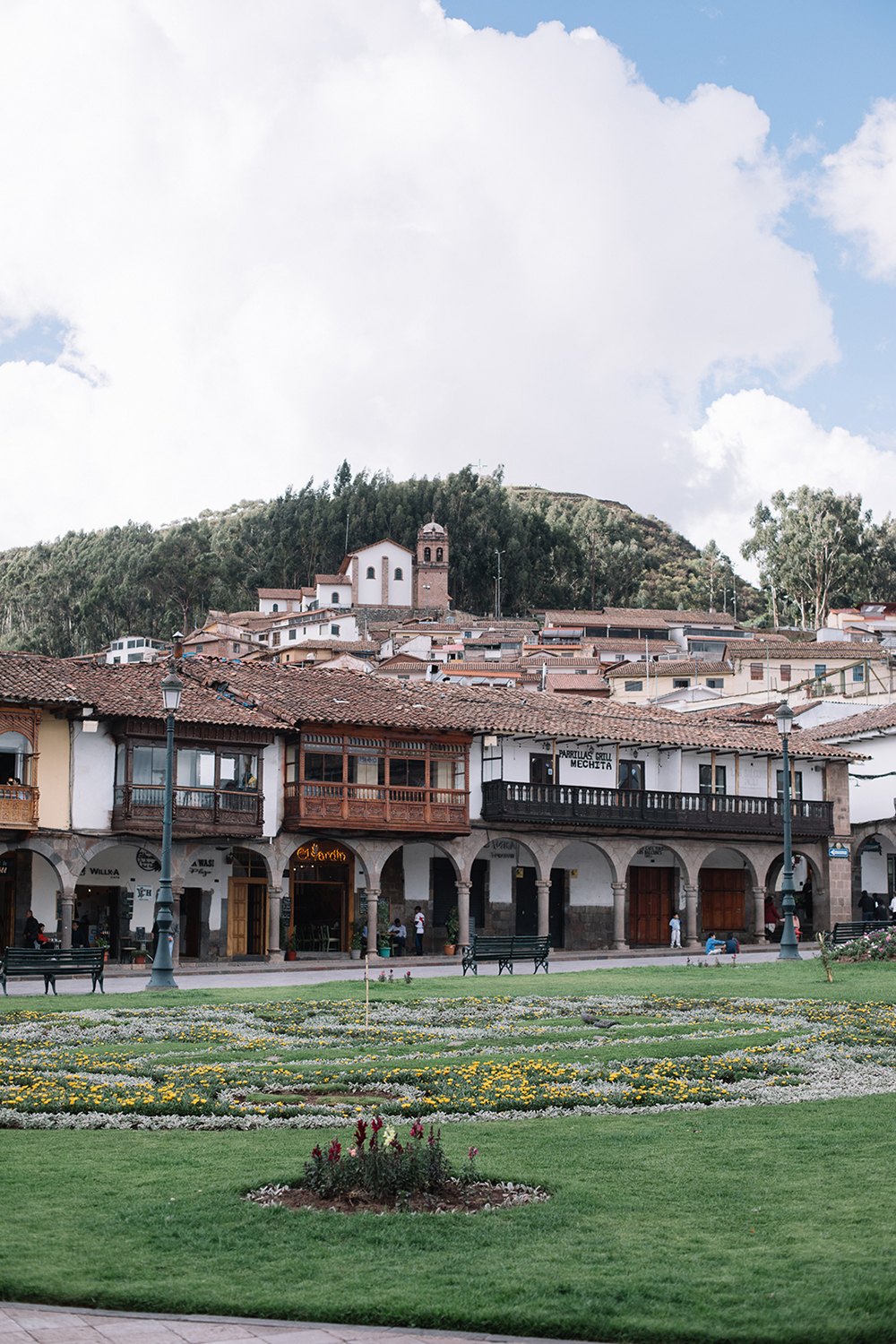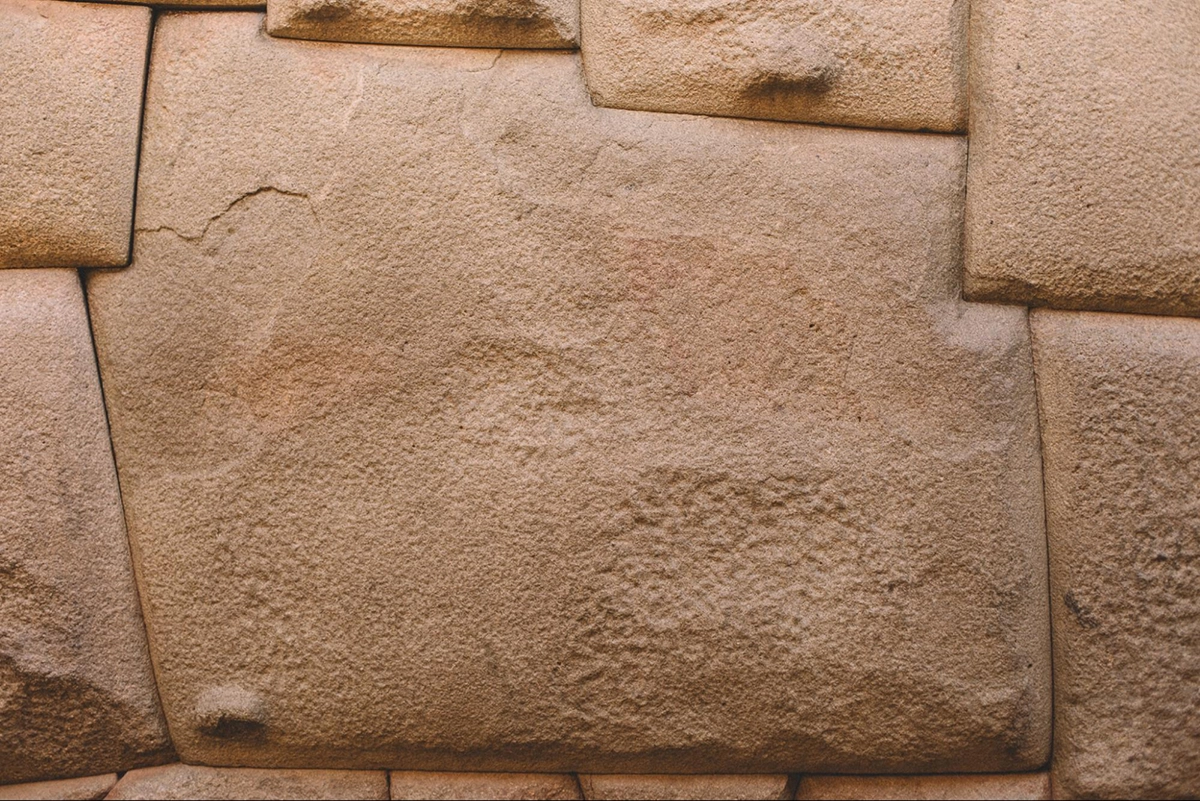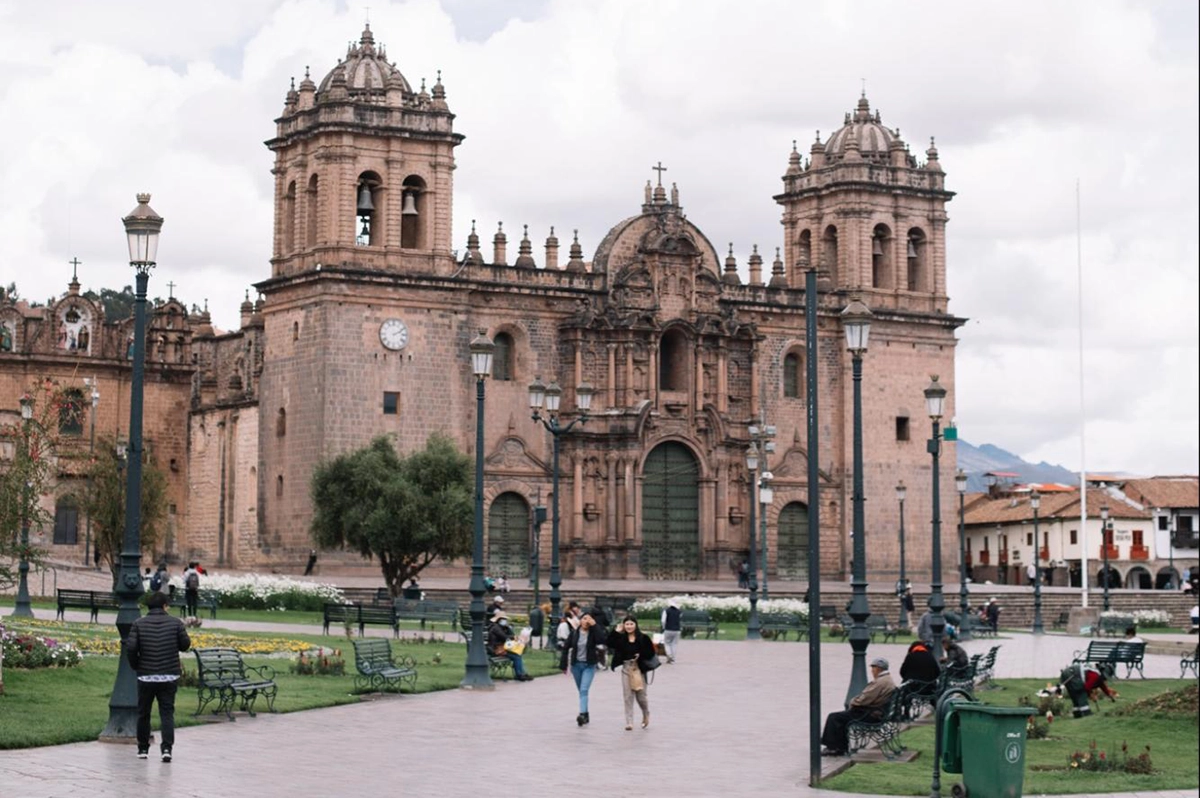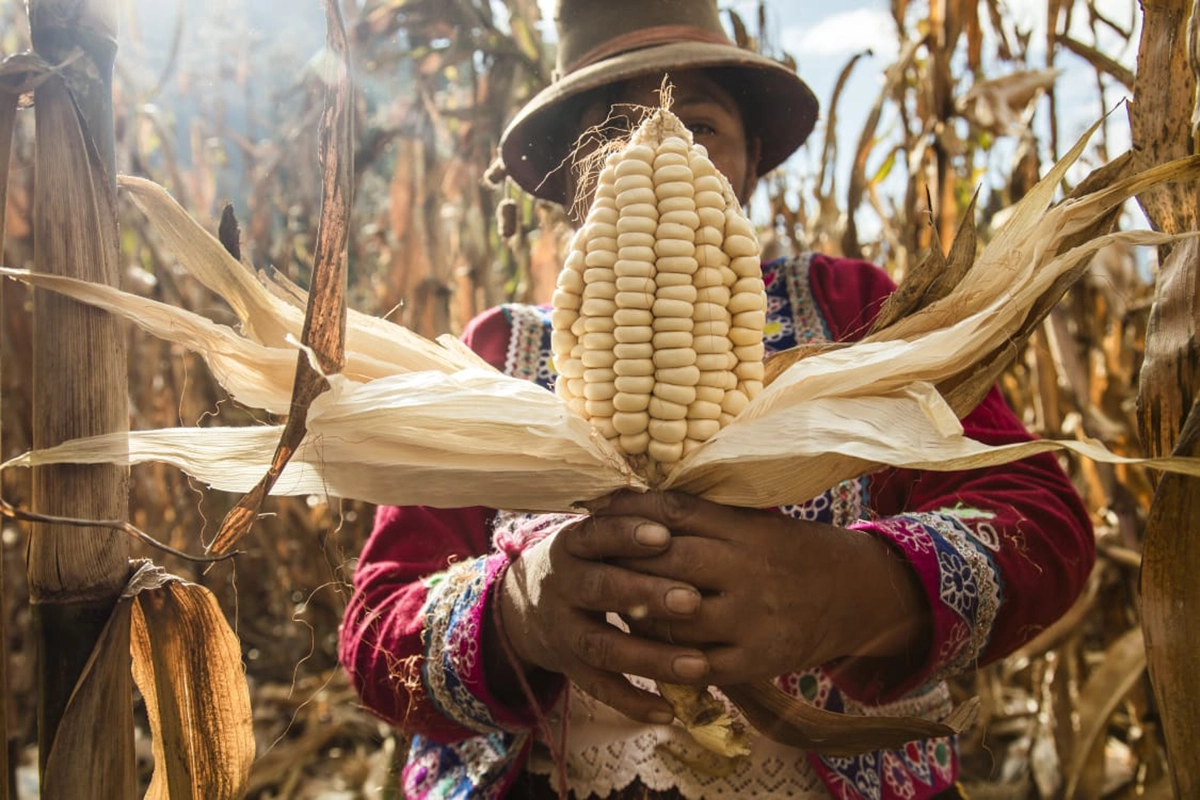As someone who was born and raised in Canada, a country that’s just over 150 years old (officially), I’ve developed a certain fascination for antiquity. In all my travels, I’ve never encountered a place with more discernible ties to the ancient world than Cusco City.
The oldest living city in the Americas, Cusco has been continuously inhabited for over 3,000 years. First settled by a farming culture around 1000 BC, it became the headquarters of the great Inca Empire in the 13th century and then the center of Spanish colonization.
Today, it’s one of Peru’s most-visited cities, and history buffs like me can delve into its past unconfined by stuffy museum walls and out-of-the-way sacred sites. You can get a ton of insight just walking the cobblestone streets lined with 500-year old foundation walls, stopping in for lunch at a traditional market, and listening to the language of the people who call this ancient city home.
A little bit Inca, a little bit colonial, and equipped with all the modern amenities, Cusco is a magical blend of cultures and time periods sure to excite the historian in everyone. Come along as we move through Cusco past to present and discover the best sites for immersing yourself in all of it.
The Capital of the Inca Empire
Although the Inca are the civilization most people associate with Cusco city, this valley nestled in the heart of the Andes mountains at 3,399 meters above sea level was inhabited by at least three civilizations before their arrival. The Marcavelle culture settled here somewhere around 1000 BC, the Chapanata culture followed them around 800 BC, and the Wari people around 750 AD.
It wasn’t until the 13th century that the Inca Empire began to build and expand the state that they called Tawantinsuyu.
This great Empire extended some 4,000 kilometres, reaching as far north as northern Ecuador and as far south as central Chile. It consisted of 12 million people and more than 100 ethnic groups at its peak.
What we now know as Cusco operated as the imperial administrative, economic, and religious headquarters, which explains all the temples, palaces, and defensive sites here.
While we know this much of their history, exactly how the Inca built these incredible structures is largely a mystery, especially considering that this civilization had yet to develop the wheel. And yet, many pieces of their architectural achievements still stand today, having withstood devastating earthquakes and the tests of time.

A view of traditional houses
The Monoliths of Cusco Sacsayhuamán

Sacsayhuamán, an impressive Inca fortress in Cusco, captivates with its massive stone walls and fascinating history.
Let’s take, for example, Cusco’s Sacsayhuamán. Designated a UNESCO World Heritage site in 1983, this must-see site was originally built by the Wari around 1100 AD, but the Inca began expanding on those foundations in the 15th century, under Emperor Pachacuti.
What’s more, Sacsayhuaman is the symbolic head of a gigantic figure laid out across the entirety of Cusco. Expertly mapped by the Incas, the whole of Cusco city takes the shape of a puma, where Sacsayhuaman serves as the head of the animal, the rivers Saphy and Tullumayo outline its body and meet at the tail, with the historic main square as the heart of the animal.
The most breathtaking aspect of Sacsayhuamán is the size of the monoliths used in its construction, which are among the largest found on any pre-Colombian site in the Americas. Indeed, the largest block is estimated to weigh between 128 and 200 tonnes and, like all the blocks making up the walls, is cut so precisely that not even paper can slide between it and adjacent stones.
Spanish Arrival & Destruction
On November 15, 1533, the Spanish arrived in Cusco and, by March 23 of the following year, Francisco Pizarro had claimed the city in the name of the Spanish King. The war between the Inca and the conquistadores was fought until 1572, ending when Emperor Tupaq Amaru was executed in the main square.
The Spaniards chose Cusco city as their capital in the New World. From here they would spread Christianity and administer their newly acquired land and its people. As part of their assertion of power, they destroyed many Inca buildings, temples, and palaces.
Many, but not all. In much of the city, churches, convents and colonial mansions rose up upon the walls and foundations of former Incan edifices, and this beautiful stone masonry is still visible throughout the narrow and winding cobblestone streets.

The Incas skillfully employed stone in their constructions, showcasing remarkable craftsmanship and engineering techniques that still impress visitors to this day.
Cusco Cathedrals on Inca Foundations
Among the most notable examples of this is the Santo Domingo Convent, built on the ruins of Coricancha (Qorikancha). Once the most sacred temples in the empire, it was dedicated to Inti, the Incan sun god.
Today, the exquisite masonry that the Inca were known for serves as the foundation of the picturesque Convent, with curved calcite and andesite stones supporting typical wooden, colonial-style balconies and a domed roof.
The 12-angled stone is another remarkable example of Incan technique that sits inconspicuously in a narrow alley between the historic center and San Blas. Making up part of the wall of Inca Roca’s former palace, it was placed there more than 700 years ago, well before the Spanish converted the building within into the Archbishop’s residence.
The Incan/colonial blend takes other forms, too. In the Plaza de Armas of Cusco, for example, the Incan temples have given way to magnificent colonial churches, Cusco Cathedral and the Iglesia de la Compania de Jesus, surrounded by historic mansions-turned-restaurants and shops.
But in this center that once represented the heart of the puma stands a statue of Pachacuti. Erected in 1992 and standing tall in the center of the Plaza de Armas, Cusco, it’s a visual reminder of the ancient history of this great city.

The Plaza de Armas in Cusco is a vibrant and historic square that serves as the heart of the city, surrounded by magnificent colonial architecture and bustling with cultural activities.
The Cusco City of Today
A short stroll through the historic center is all one needs to recognize Cusco as the cultural capital of Peru. Its ancient and colonial history is more than just the foundation for impeccable architecture; it underpins the entire modern culture here.
Pieces of the past live on in the foods you eat, the languages you hear, the colorful clothing you see, and the festivities that take over the city from June to September. Besides touching stones that have stood watch for hundreds, if not thousands, of years, this living culture is for me the magic of Cusco.
The Food
Second only to my love for history is my love for food; in Cusco, nearly all of my favorite snacks and meals combine these twin passions. For instance, choclo con queso is a common street snack that combines an Inca staple, corn, with a colonial vestige, cheese.
Peruvian white corn is called choclo, a word that comes from the Quechua word choccllo, and it’s been cultivated here since at least 1200 BC. Served in a variety of ways, the best, in my humble foodie opinion, is with a slice of quesillo. This soft cheese, synonymous with the cuisine of the Andes mountains, was actually introduced to the Peruvian colony by the Spanish, along with all other dairy products.

Peruvian Choclo
Today, it’s much the same. San Pedro market is the oldest (and, I believe, most authentic) market in Cusco. The authenticity of San Pedro market isn’t limited to its wares, though.
The Language and Clothing
You’ll often hear the vendors speaking Quechua to each other. Still spoken amongst Cusqueños, and the mother tongue for many locals from the surrounding area, Quechua is the language of the Inca. Vendors move easily between this ancient language and the Spanish brought by the conquistadores.
Even more colorful than the fruits and vegetables is the clothing worn by some vendors. Indeed, the extravagant clothing worn by women and men across the city is one of the first cultural artifacts people notice when visiting, not counting the llamas and alpacas at their side.
While some pieces are of colonial origin, such as the skirts and jackets worn by women, other pieces are thought to be a combination of ancient custom and colonial influence, such as the Chullo hats worn by men.
The Festivals
Perhaps the most obvious way in which the ancient, the colonial, and the modern blend in Cusco is in religion. The Spanish imposed Christianity with great force, and Cusco remains one of the most religious towns in the entire country.
However, it’s also the place where pre-Spanish religious festivities have been kept alive and are celebrated every year with fervor. If you happen to be visiting in June, you’ll witness the Inti Raymi festival. The Festival of the Sun is an Inca festival that honors the sun god, Inti has been part of the city’s heritage since 1535 AD.
Cusco City with Curios
I could write a book on the blend of periods and cultures represented throughout Cusco – perhaps one day I will. This is just a sampler.
Nearly every street, church, painting, textile, meal, and festival is laden with history and custom, each more interesting than the last. Quench your curiosity on a unique and educational Cusco experience with us.
Tours:



